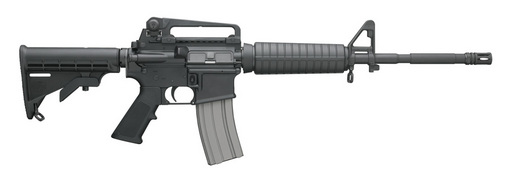“As a country, we have been through this too many times…”
— President Obama, December 14, 2012
It was a busy week of business-as-usual in the USA:
Tuesday, December 11: A man killed three people (including himself) and wounded another in shootings at the Clackamas Mall in Portland, OR.
Friday, December 14, 2012: 27 people killed (20 of them children) with semi-automatic weapons at an elementary school in Newtown, CT. Also: Two killed in murder-suicide at the Excalibur Hotel and Casino in Las Vegas. Two hospital employees and one police officer wounded, gunman with rifle killed, at Alabama hospital. Police thwart a “Columbine-style” high school massacre planned by 18-year-old student in Oklahoma. A man in possession of 47 guns was arrested after threatening to “kill as many people as he could” at an elementary school in Indiana, about 45 miles southeast of Chicago.
Saturday, December 15: The Fashion Island Mall in Newport Beach, CA, was put on lockdown after reports of “10 to 20” gunshots fired; a suspect was arrested.
Many of us have come to accept that this is the status quo in the society we have created. Maybe we’ll change it, maybe we won’t. President Obama says he wants to see some concrete proposals for legislation (not just regarding access to guns and ammunition, but access to mental health care, too) in January. Even the National Rifle Association, the nation’s leading gun lobby, says it will hold a “major press conference” Friday and that it “is prepared to offer meaningful contributions to help make sure this never happens again.”
(UPDATE 12/21/2012: Here is a transcript of that NRA press event and a very informative, impartial Poynter article fact-checking what was said.)
Yet we all know it will happen again. And everyone seems to have opinions about what, if anything, should be done to cut down on mass shootings. First, let me offer two opinions of my own:
1) Despite everything you hear about so-called “gun nuts,” I do not believe the vast majority of firearm owners are crackpots. Yes, a small fraction are sociopaths, survivalists, racists and anti-government militants (did I leave anyone out?). They are a social menace, but I don’t know what can be done about them.
2) I have proposed a Modest Catch-22 (only partially facetious) to address the issues raised above: If you believe that the government is plotting to take away your guns, then you are paranoid and crazy and should have your guns taken away.
But that’s just my opinion. Another opinion of mine is that opinions alone should not be legislated. Opinions are a dime a dozen. What we seem to be short of are facts. So, here are some that, regardless of my (or your) past or present opinions, might be relevant to the discussions we’ve been having, and will be having in the near future. Please note that items contain links to original sources and citations. If you have more facts you’d like to contribute, please post them — and links for verification — in comments. Thanks.):
• An appalling amount of information reported in the first 24 hours or so after an atrocity like the one in Connecticut is later found to be false. For example: the killer’s older brother was initially identified as the shooter; the killer’s mother was said to be a teacher at the school; the AR-15-type rifle used on most of the victims was reported to have been left in the car… and so on… (Read Dave Cullen’s 2009 book on “Columbine” and you’ll find out how many myths persist even all these years later.)
• You already knew this, but the USA has the highest civilian gun ownership rate in the world.
• US civilians own about 270 million guns, compared to about 3 million by the military and less than 1 million by police.
• A Harvard University study estimated that 20 percent of gun owners possess 65 percent of the guns in the US.
• The National Rifle Association says it has approximately 4 million members. According to the Institute for Legislative Action, which describes itself as “the lobbying arm of the NRA” (established in 1975), the NRA has “nearly 4 million members — a number that has tripled since 1978.”
• According to Gallup (October, 2011), “Forty-seven percent of Americans report that they have a gun in their home or elsewhere on their property.” The NRA-ILA’s Firearms Fact Card, 2010, estimates that 70-80 million Americans own guns, and 40-45 million own handguns.
• Fewer than 6 percent of gun owners in the US belong to the NRA. (See numbers, sources above.)

Above: A combative slogan from the NRA web site.
• Three quarters of the guns used in mass murders since 1982 were “obtained legally.”
• There has always been “gun control” of some form in the United States. As The Atlantic reported in a 2011 piece called “The Secret History of Guns“:
“The Ku Klux Klan, Ronald Reagan, and, for most of its history, the NRA all worked to control guns. The Founding Fathers? They required gun ownership — and regulated it. And no group has more fiercely advocated the right to bear loaded weapons in public than the Black Panthers — the true pioneers of the modern pro-gun movement. In the battle over gun rights in America, both sides have distorted history and the law, and there’s no resolution in sight.” […]
… “The Founding Fathers instituted gun laws so intrusive that, were they running for office today, the NRA would not endorse them. While they did not care to completely disarm the citizenry, the founding generation denied gun ownership to many people: not only slaves and free blacks, but law-abiding white men who refused to swear loyalty to the Revolution.
“For those men who were allowed to own guns, the Founders had their own version of the ‘individual mandate’ that has proved so controversial in President Obama’s health-care-reform law: they required the purchase of guns. A 1792 federal law mandated every eligible man to purchase a military-style gun and ammunition for his service in the citizen militia. Such men had to report for frequent musters — where their guns would be inspected and, yes, registered on public rolls.”
• In District of Columbia v. Heller (2008), the US Supreme Court found that the Second Amendment protects an individual right to keep and bear arms, beyond that of “a well-regulated militia being necessary to the security of a free state.”
• The Court’s decision also held:
“Like most rights, the Second Amendment right is not unlimited. It is not a right to keep and carry any weapon whatsoever in any manner whatsoever and for whatever purpose: For example, concealed weapons prohibitions have been upheld under the Amendment or state analogues. The Court’s opinion should not be taken to cast doubt on longstanding prohibitions on the possession of firearms by felons and the mentally ill, or laws forbidding the carrying of firearms in sensitive places such as schools and government buildings, or laws imposing conditions and qualifications on the commercial sale of arms. Miller’s holding that the sorts of weapons protected are those “in common use at the time” finds support in the historical tradition of prohibiting the carrying of dangerous and unusual weapons.”
• It has been estimated that about 40 percent of gun sales are conducted without background checks.
• The background checks mandated in the Brady Handgun Violence Prevention Act of 1993 are designed to prohibit sales of firearms to anyone who:
1. Has been convicted in any court of a crime punishable by imprisonment for a term exceeding one year;
2. Is a fugitive from justice;
3. Is an unlawful user of or addicted to any controlled substance;
4. Has been adjudicated as a mental defective or committed to a mental institution;
5. Is an alien illegally or unlawfully in the United States;
6. Has been discharged from the Armed Forces under dishonorable conditions;
7. Having been a citizen of the United States, has renounced U.S. citizenship;
8. Is subject to a court order that restrains the person from harassing, stalking, or threatening an intimate partner or child of such intimate partner, or;
9. Has been convicted in any court of a misdemeanor crime of domestic violence.
10. Has a record of being a felon
• Between 1998 and 2008 about 96 million background checks were made; one percent of purchases were denied. Of denied applicants, eight percent “were not prohibited from lawfully possessing a firearm.”
• The “Federal Assault Weapons Ban” went into effect in 1994 and was allowed to expire in 2004. It restricted sales and manufacture of some semi-automatic weapons but was full of loopholes (grandfather clauses, exceptions for gun shows and sales between unlicensed individuals, “military style” components, etc.) that made it relatively ineffective. Also, it prohibited only “18 specific types of semi-automatic weapons” with certain “cosmetic features” (pistol grips, flash suppressors, bayonet mounts, etc.), which, according to a 2004 report commissioned by the Department of Justice, targeted “a relatively small number of weapons based on features that have little to do with the weapons’ operation, and removing those features is sufficient to make the weapons legal.”
• Still, statistics indicate that the number of people killed in mass shootings was lower during the ban (1994-2004) than it was before or after — even with the Columbine killings (13 dead) in 1999.
• Most mass murderers are not “mentally ill in the psychiatric sense.” According to experts on mass killings and school violence, however, they are often paranoid and angry — habitual losers who blame others for their failures and “often times feel that they are right and everybody else is wrong.”
• Mass shootings tend to be planned, not spontaneously carried out in the heat of the moment.
• Roughly half of mass shootings took place in schools or workplaces; the other half in “shopping malls, restaurants, government buildings, and military bases.”
• In 2009, gun deaths outpaced motor vehicle deaths in ten US states.
• Fully automatic weapons (which are legal in the US but heavily regulated) allow multiple rounds to be fired while the trigger is pressed; semi-automatic weapons automatically re-set the weapon after firing, but require a separate pull of the trigger for each round fired.
• Mass murders also tend to be committed with semi-automatic weapons, using high-capacity magazines that allow the killers to shoot many victims in a short period of time. (In Sandy Hook, 20 children, between six and seven years old, were killed, each shot between three and 11 times, in about 10 minutes. The killer fired “ at least three, 30-round magazines.”)
• Among the key findings in a 2002 study by the Secret Service and the US Department of Education, “Implications for the Prevention of School Attacks in the United States,” were:
• There is no accurate or useful ‘profile’ of students who engaged in targeted school violence.
• Many attackers felt bullied, persecuted or injured by others prior to the attack.
• Most attackers had no history of prior violent or criminal behavior.
• Most attackers were known to have had difficulty coping with significant losses or personal failures. Moreover, many had considered or attempted suicide.
• Over half of the attackers demonstrated some interest in violence, through movies, video games, books, and other media. However, there was no one common type of interest in violence indicated. Instead, the attackers’ interest in violent themes took various forms.
• Incidents of targeted violence at school rarely are sudden, impulsive acts.
• Prior to most incidents, other people knew about the attacker’s idea and/or plan to attack.
• Most attackers did not threaten their targets directly prior to advancing the attack.
• Most attackers engaged in some behavior, prior to the incident, that caused others concern or indicated a need for help.
• Most attackers had access to and had used weapons prior to the attack.
• Despite prompt law enforcement responses, most attacks were stopped by means other than law enforcement intervention. (In “just over one-fifth” of the incidents considered, the attacker stopped on his own.)
• Conservative columnist Charles Krauthammer argues that anything short of banning/confiscating all existing firearms would be ineffective because of “grandfather clauses” and other loopholes: The proposed assault weapons ban proposed by Senator Dianne Feinstein, for example, “would exempt 900 weapons. And that’s the least of the loopholes. Even the guns that are banned can be made legal with simple, minor modifications.”
• Ammunition can also be regulated.
• “Hollow-point bullets” (and plastic-tipped rifle bullets) “are designed to increase in diameter once within the target, thus maximizing tissue damage and blood loss or shock, and to remain inside the target, thereby transferring all of its kinetic energy to that target.”
• Although the Hague Convention of 1899 prohibited expanding or flattening ammunition in international warfare, “hollow-point bullets are one of the most common types of civilian and police ammunition, due largely to the reduced risk of bystanders being hit by over-penetrating or ricocheted bullets, and the increased speed of incapacitation.”
• The “AR-15-style” semi-automatic rifle used by the Sandy Hook Elementary, Portland mall and Aurora movie theater shooters is a civilian model based on the military M16. (Below is a customized “Hello Kitty” version.)
• The main weapon used in Connecticut was described as a “Bushmaster .223,” but many companies manufacture AR-15 weapons, including Colt, DPMS, Land Warfare Resources Corporation, Remington, Rock River, Sabre Defence, Sig Sauer, Smith & Wesson…
• The Bushmaster AR-15, sold at Walmart among other retailers, is reportedly “the most popular assault weapon in America.”
• A brief history of “major shooting incidents” in the USA, 1999-2012.
• By the numbers: Guns in America.

A Bushmaster ad in Maxim magazine:












